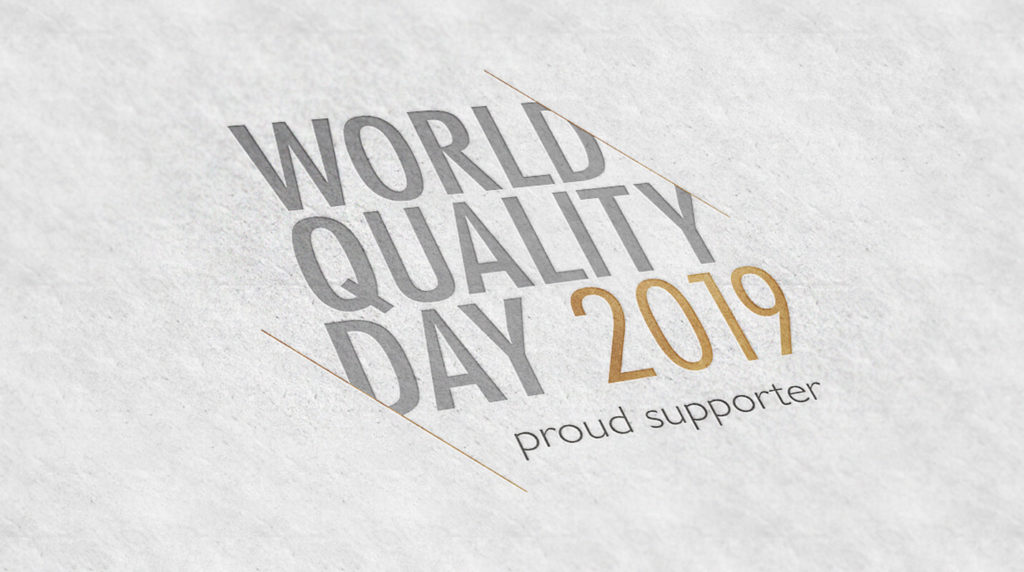

The theme of this year’s World Quality Day (#WQD19) is 100 years of quality so I thought I would take a look at the history of the Chartered Quality Institute. To celebrate the centenary, the History of the CQI is now available as an e-book (written by Margaret Rooney) detailing the initially rather erratic history of the CQI - the organisation moved 11 times in its first 40 years and was often in financial crisis. The development of the professional body from one based on military requirements to a forward-thinking organisation focussed on governance, assurance and improvement has taken 100 years and I am proud to be a member.
It all started in 1919, after the chaos and destruction of the First World War...
1919
1922
- To promote and encourage the practice of inspection
- To ensure inspection is only undertaken by qualified persons
- To raise and uphold the status of practising inspectors
- To enable members to exchange ideas
1972
1995
2007
2010
2014
2019
- Purpose “To advance education in, knowledge of, and the practice of, quality in industry, commerce, the public service, and the voluntary sector”
- Strategic objectives “To lead a quality profession valued by employers as a business partner in delivery excellence in governance, assurance and improvement” and “To align the CQI’s resources to delivery excellence in the profession”
What I've learned about the last 100 years of Quality
Having read the ‘Looking at the Past 100 Years’ series published in the Quality World magazine, I’ve learnt some interesting facts about the last 100 years of Quality:
1920s The ‘Father of Quality’ W Edwards Deming started to apply Statistical Process Control methods to non-manufacturing activities including management processes.
1930s Sociologist Elton Mayo started to conduct some experiments at Hawthorne Works in Chicago, where changes to the environment, such as better lighting were found to increase productivity. Other changes were trialled such as introducing rest breaks and training Supervisors and these boosted productivity too.
1940s The International Standards Organisation was established in 1947 in London by delegates from 25 countries and in 1951 published the first standard, the fascinating sounding ‘ISO/R 1:1951 Standard
reference temperature for industrial length measurements.’ There are now over 22,000 standards!
1950s Deming was invited to Japan and taught application of quality statistics to quality improvement. The Deming approach advocates the responsibility of management for the whole system including people, processes, methods and suppliers.
1960s The concept of Kaizen was developed in Japan, Kaizen means ‘Change for the better’ and involves everyone in the organisation. The aim in continual, sustainable improvement focusing on the elimination of waste at all stages of a process.
1970s BS 5750 was published in 1979 in the UK, this was the first Quality Management Standard and was heavily based on Ministry of Defence requirements. Philip Crosby wrote ‘Quality is Free’ in 1979 which detailed 14 steps to improve quality, these include some familiar ones (ISO 9001:2015 clauses in brackets):
- Management commitment (Clause 5 Leadership)
- Quality awareness (Clause 7.3 Awareness)
- Corrective action (Clause 10.2 Nonconformity and corrective action)
- Goal setting (Clause 6.2 Quality objectives)
- Recognition
- Do it over again (Clause 10 continual improvement)
1980s The first member of the ISO 9000 family was published in 1987 with ISO 9001. Toyota develops Total Quality Management based on Demings 14 points which again include some familiar ones:
- Constantly improve the system
- Institute leadership
- Eliminate arbitrary numerical targets
- Permit pride in workmanship
- Encourage education
- Top management commitment and action
1990s John Kotter emphasised the human side of change in change management and created an 8 step process:
- Create a sense of urgency
- Building a guiding coalition
- Form a strategic vision and initiatives
- Enlist a volunteer army
- Enable action by removing barriers
- Generate short term wins
- Sustain acceleration
- Institute change
2000s - In February 2001, 17 software practitioners created the Agile Manifesto to provide principles behind the design and development of software. The 4 key principles and 12 additional principles can also be applied to encourage ‘agile’ thinking across all areas of business. The Agile Manifesto is:
We are uncovering better ways of developing software by doing it and helping others do it. Through this work we have come to value:
Individuals and interactions over processes and tools
Working software over comprehensive documentation
Customer collaboration over contract negotiation
Responding to change over following a plan
That is, while there is value in the items on the right, we value the items on the left more.
So there you have it, a high speed tour through 100 years of quality management - I wonder what the next 100 years will bring!